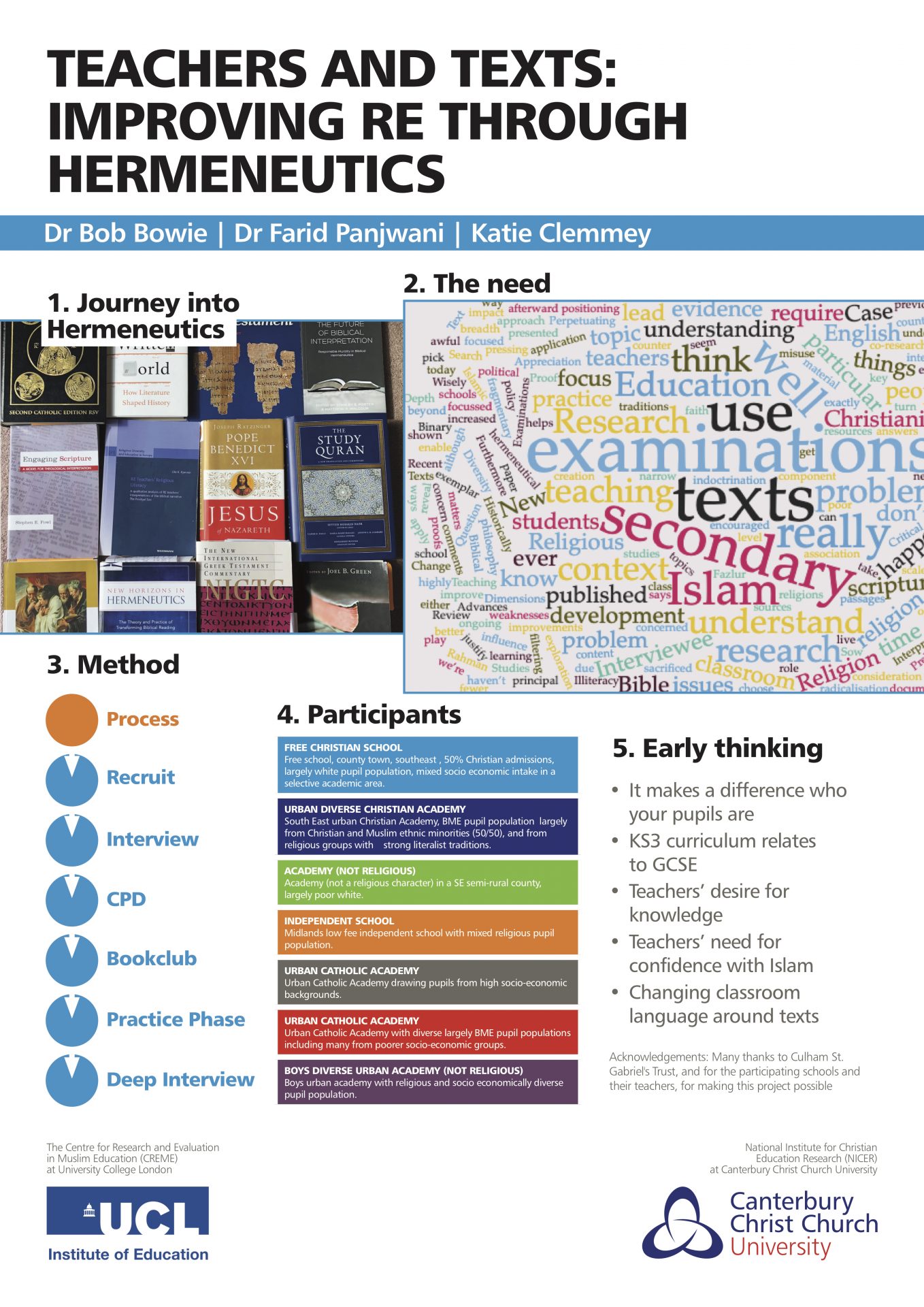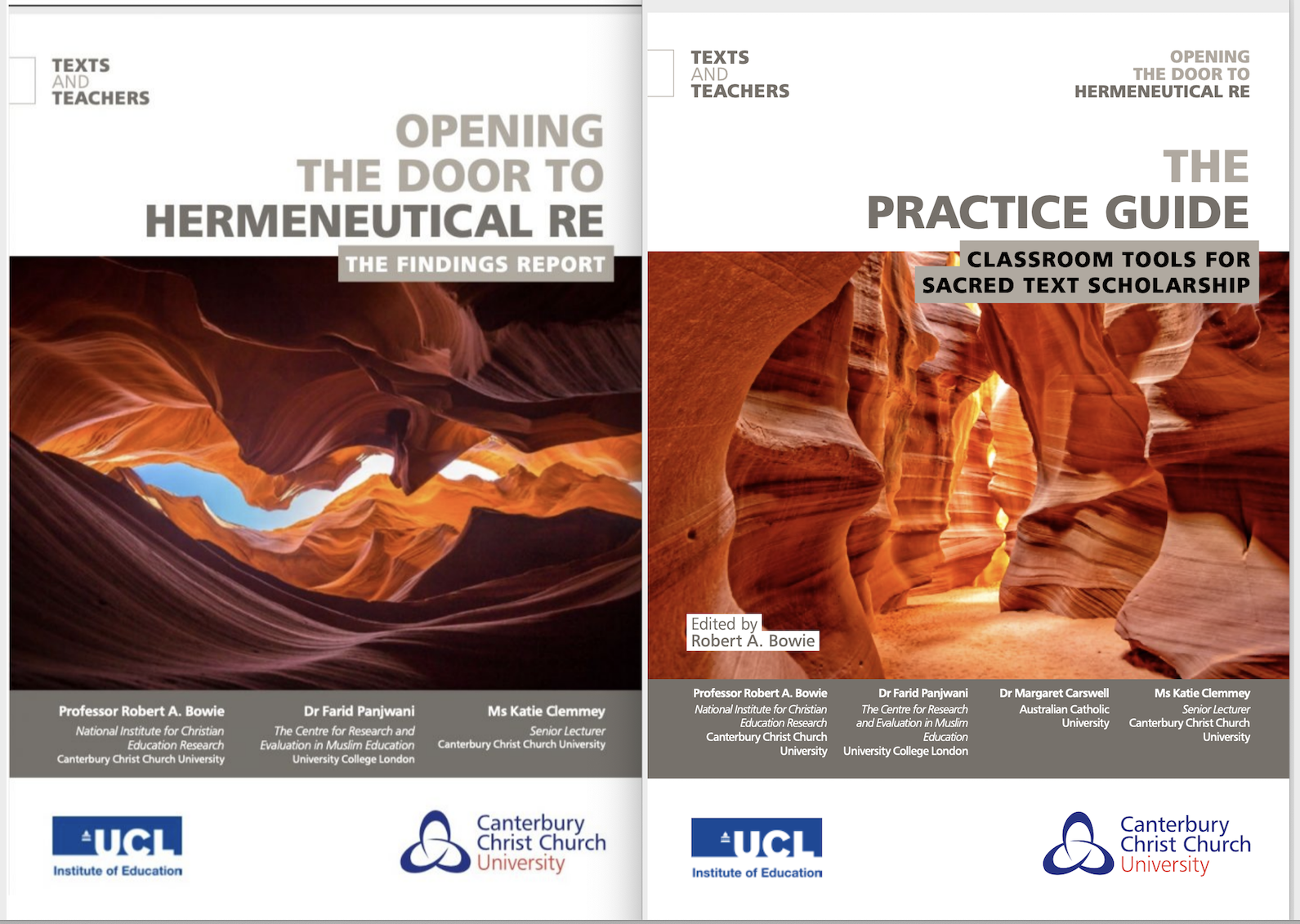To download
Opening the Door to Hermeneutical RE: The Findings Report
and
The Practice Guide: Classroom Tools for Sacred Text Scholarship
click here.
This project, a collaboration between Professor Bob Bowie and Ms Katie Clemmey of the National Institute for Christian Education Research (NICER) and the Centre for Research Evaluation in Muslim Education with Dr. Farid Panjwani at University College London (now renamed the Centre for the Study of Education in Muslim Contexts (CEMC) ), sought to support teachers in seven contrasting secondary schools, teach RE more hermeneutically. It came on the back of research by Bowie and others (for instance see here with Coles, and, by Panjwani and Revell, see here) and that the use of texts in RE classrooms is and has been an ongoing problem for many years that continues with the revised GCSE. It was inspired by the thought that a more hermeneutical approach in the subject might help both the transition to Religion and Worldviews education and also the development of a stronger disciplinary knowledge base. It was grant funded by Culham St Gabriel’s Trust and supported by Bible Society.
Early indications were presented at AULRE 2019 at Newman University. You can download this research poster here:

Opening the Door to Hermeneutical RE: The Findings Report outlines the project, its findings and conclusions.
The Practice Guide: Classroom Tools for Sacred Text Scholarship contains some of the professional development materials developed for the project. It is written to support teachers and curriculum designers teach RE with a focus on Sacred Text Scholarship.
Who is the report for?
The report is for teachers, curriculum leaders, curriculum designers and examination boards.
Summary of Findings
- The teachers described a sense of agency that hermeneutical tools gave students in activities around the interpretation of sacred text.
- The teachers reported that pupils were positive about engaging with longer extracts of sacred text including students who they had thought would struggle or lack motivation in such activities.
- Hermeneutical approaches in these cases led to a deeper quality of conversation in lessons about texts.
- Hermeneutics was seen as a valuable dimension in curriculum design allowing for progression through multi-religious study.
- Almost all of the teachers developed competent hermeneutical lessons, some with excellent examples of student work.
- From their key stage 3 changes, several teachers thought that hermeneutics would lead to better GCSE responses, particularly in explaining differences within religions. They also felt that a better space for hermeneutics could be included in exams.
In conclusion, we thought:
“Sacred text scholarship allows students to investigate the layers of meaning that people find significant. In making the hermeneutical process more explicit teachers help students become conscious of the process of reading sacred texts, and the place of the reader in making sense of a text, as well as the senses held by communities, and those held at different times and places. “
“There is a greater possibility for change and for reform of religious education if the idea of inhabiting the place of a sacred text scholar becomes part of Religion and Worldviews in schools. It offers one pathway to unlocking a disciplinary study of how people find significance and read meaning through worldviews.”
Blog piece written by Professor Bob Bowie and updated 30/3/2020
 National Institute for Christian Education Research (nicer)
National Institute for Christian Education Research (nicer) Bob Bowie
Bob Bowie 1661
1661


